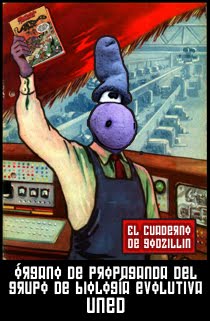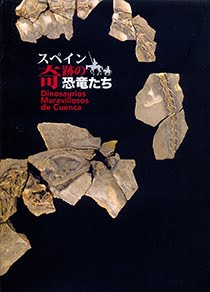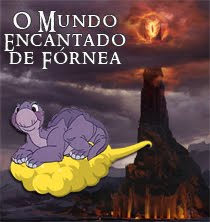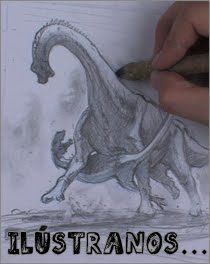 Y antes de que nos invadan nuevos congresos (como con los huracanes, estamos en temporada), al 8th Annual Meeting of the European Association of Vertebrate Palaeontologists de Aix-en-Provence (La France) también se presentaron algunos trabajos sobre el yacimiento de "Lo Hueco". El primero es una aproximación general a los primeros resultados de los análisis de microfauna que ya se han empezado a procesar y parecen resultar prometedores.
Y antes de que nos invadan nuevos congresos (como con los huracanes, estamos en temporada), al 8th Annual Meeting of the European Association of Vertebrate Palaeontologists de Aix-en-Provence (La France) también se presentaron algunos trabajos sobre el yacimiento de "Lo Hueco". El primero es una aproximación general a los primeros resultados de los análisis de microfauna que ya se han empezado a procesar y parecen resultar prometedores.
---
En la foto, A. Torices en un momento del proceso de lavado de sedimento.
Resumen:
Torices, A.; Díaz-Berenguer, E.; Narvaez, I.; Ortega, F.; Pérez, S.; Serrano, H. (2010) Preliminary analysis of the microvertebrate fossils of "Lo Hueco" (Upper Cretaceous, Cuenca, Spain) 8th Annual Meeting of the European Association of Vertebrate Palaeontologists.
 "Lo Hueco" site was discovered in 2007 during the construction of the Madrid - Levante highspeed railway. More than 8500 macrovertebrate rests were recovered which constitutes one the most abundant assemblage of the South-Western European upper Campanian-lower Maastrichtian continental vertebrate fauna. Also more than 25 tons of material taken from different geological levels were taken for microvertebrate study. A preliminar study of the material obtained by screenwashing and picking have disclosed us a diversity composed mainly of species tipical of lacustrine or shallow waters coastal environments. The most abundat remains correspond to fishes, mostly different morphologies of ganoid scales that can be related to medium and posterior positions in the body and can be attributted to Lepisosteidae indet. Numerous teeth typical from lepisoteids and others assigned to Pycnodontoidea, Amiidae and Abulidae have been recovered too together with several postcranial elements including an atlas of cf. Lepisoteidae. Several postcranial rests, mainly diaphyses of appendicular bones, of lissamphibians have been collected as well as a mandibular fragment attributed to a scincomorph, probably a lacertoidea and cranial bones of squamates preliminarly assigned to iguanids. Crocodiles are represented by numerous teeth assigned to cf. Musturzabalsuchus and Eusuchia indet. Theropod remains, mainly teeth, are fewer but representative of Coelurosauridae indet., cf. Dromaeosauridae indet. and cf. Velociraptorinae indet. This preliminary analysis suggests a high potential of "Lo Hueco" site to understand the palocommunities of the Iberian Upper Cretaceous.
"Lo Hueco" site was discovered in 2007 during the construction of the Madrid - Levante highspeed railway. More than 8500 macrovertebrate rests were recovered which constitutes one the most abundant assemblage of the South-Western European upper Campanian-lower Maastrichtian continental vertebrate fauna. Also more than 25 tons of material taken from different geological levels were taken for microvertebrate study. A preliminar study of the material obtained by screenwashing and picking have disclosed us a diversity composed mainly of species tipical of lacustrine or shallow waters coastal environments. The most abundat remains correspond to fishes, mostly different morphologies of ganoid scales that can be related to medium and posterior positions in the body and can be attributted to Lepisosteidae indet. Numerous teeth typical from lepisoteids and others assigned to Pycnodontoidea, Amiidae and Abulidae have been recovered too together with several postcranial elements including an atlas of cf. Lepisoteidae. Several postcranial rests, mainly diaphyses of appendicular bones, of lissamphibians have been collected as well as a mandibular fragment attributed to a scincomorph, probably a lacertoidea and cranial bones of squamates preliminarly assigned to iguanids. Crocodiles are represented by numerous teeth assigned to cf. Musturzabalsuchus and Eusuchia indet. Theropod remains, mainly teeth, are fewer but representative of Coelurosauridae indet., cf. Dromaeosauridae indet. and cf. Velociraptorinae indet. This preliminary analysis suggests a high potential of "Lo Hueco" site to understand the palocommunities of the Iberian Upper Cretaceous.
En la foto, A. Torices en un momento del proceso de lavado de sedimento.
Resumen:
Torices, A.; Díaz-Berenguer, E.; Narvaez, I.; Ortega, F.; Pérez, S.; Serrano, H. (2010) Preliminary analysis of the microvertebrate fossils of "Lo Hueco" (Upper Cretaceous, Cuenca, Spain) 8th Annual Meeting of the European Association of Vertebrate Palaeontologists.
 "Lo Hueco" site was discovered in 2007 during the construction of the Madrid - Levante highspeed railway. More than 8500 macrovertebrate rests were recovered which constitutes one the most abundant assemblage of the South-Western European upper Campanian-lower Maastrichtian continental vertebrate fauna. Also more than 25 tons of material taken from different geological levels were taken for microvertebrate study. A preliminar study of the material obtained by screenwashing and picking have disclosed us a diversity composed mainly of species tipical of lacustrine or shallow waters coastal environments. The most abundat remains correspond to fishes, mostly different morphologies of ganoid scales that can be related to medium and posterior positions in the body and can be attributted to Lepisosteidae indet. Numerous teeth typical from lepisoteids and others assigned to Pycnodontoidea, Amiidae and Abulidae have been recovered too together with several postcranial elements including an atlas of cf. Lepisoteidae. Several postcranial rests, mainly diaphyses of appendicular bones, of lissamphibians have been collected as well as a mandibular fragment attributed to a scincomorph, probably a lacertoidea and cranial bones of squamates preliminarly assigned to iguanids. Crocodiles are represented by numerous teeth assigned to cf. Musturzabalsuchus and Eusuchia indet. Theropod remains, mainly teeth, are fewer but representative of Coelurosauridae indet., cf. Dromaeosauridae indet. and cf. Velociraptorinae indet. This preliminary analysis suggests a high potential of "Lo Hueco" site to understand the palocommunities of the Iberian Upper Cretaceous.
"Lo Hueco" site was discovered in 2007 during the construction of the Madrid - Levante highspeed railway. More than 8500 macrovertebrate rests were recovered which constitutes one the most abundant assemblage of the South-Western European upper Campanian-lower Maastrichtian continental vertebrate fauna. Also more than 25 tons of material taken from different geological levels were taken for microvertebrate study. A preliminar study of the material obtained by screenwashing and picking have disclosed us a diversity composed mainly of species tipical of lacustrine or shallow waters coastal environments. The most abundat remains correspond to fishes, mostly different morphologies of ganoid scales that can be related to medium and posterior positions in the body and can be attributted to Lepisosteidae indet. Numerous teeth typical from lepisoteids and others assigned to Pycnodontoidea, Amiidae and Abulidae have been recovered too together with several postcranial elements including an atlas of cf. Lepisoteidae. Several postcranial rests, mainly diaphyses of appendicular bones, of lissamphibians have been collected as well as a mandibular fragment attributed to a scincomorph, probably a lacertoidea and cranial bones of squamates preliminarly assigned to iguanids. Crocodiles are represented by numerous teeth assigned to cf. Musturzabalsuchus and Eusuchia indet. Theropod remains, mainly teeth, are fewer but representative of Coelurosauridae indet., cf. Dromaeosauridae indet. and cf. Velociraptorinae indet. This preliminary analysis suggests a high potential of "Lo Hueco" site to understand the palocommunities of the Iberian Upper Cretaceous.


























No hay comentarios:
Publicar un comentario